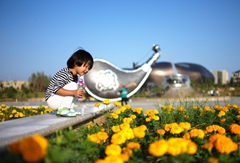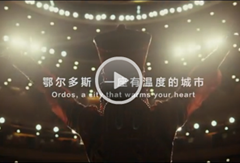Changes in clothing in 40 years since reform and opening-up
Updated: 2018-10-25  Print
Print 



Clothing, a basic necessity of human life, is an important emblem of human civilization. Changes in clothing down the centuries have recorded and represented historical transitions and cultural progress.
As people's living standards improved after the establishment of the Inner Mongolia autonomous region in 1947, their consumption of clothing grew gradually. However, the supply-demand relationship of clothing remained tense. By the end of the 1970s, influenced by shortages of material and new aesthetic standards, people's clothes had become characterized by limited categories of fabrics, plain colors and simple styles.
After reform and opening-up policies came in after 1978, people's clothing showed a trend of “varied fabrics and ready-to-wear materials” with more diversified products and people enjoying increased purchasing power.
By the 21st century, incomes had been continuously increasing for several decades, and the region’s people had updated their ideas about buying clothes. Their understanding of clothes changed from seeing them as tools to keep warm to items of fashion that could be made ready-to-wear, and could come a wider range of colors rather than just the dominant green, blue, black and gray of earlier times.
Meanwhile, the modernization of clothing design and production stimulated manufacturers to adopt both ethnic and international elements, and the resulting increased use of ethnic elements brought about a blossoming of wider ethnic culture.
In the current stage, per capita expenditure on clothing in the region has greatly increased compared to the early period of reform and opening-up.
In 2016, the per capita clothing expenditure of urban residents and of farmers and herdsmen respectively reached 2,543 yuan ($367) and 814 yuan, 2,424 yuan and 784 yuan more than in 1985.
During the 40 years of reform and opening-up in the autonomous region, the clothes of both urban and rural residents have changed in style, color and texture to brand-oriented products, from reflecting regional and ethnic characteristics to combining them with international elements. These changes have recorded the developments of people's lives in these prosperous times.





 Ordos Impression
Ordos Impression Ordos WeChat
Ordos WeChat Ordos Reported
Ordos Reported


